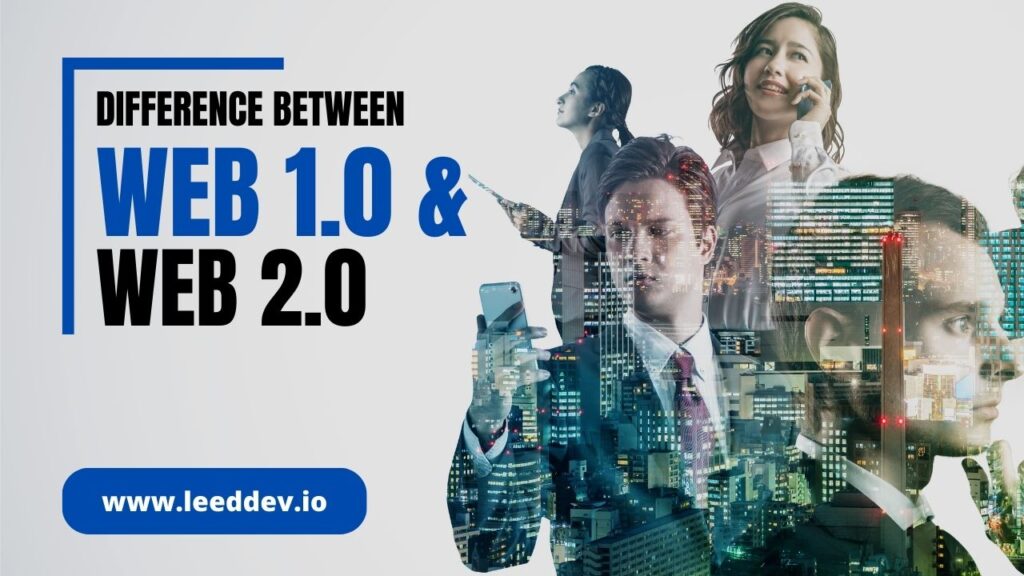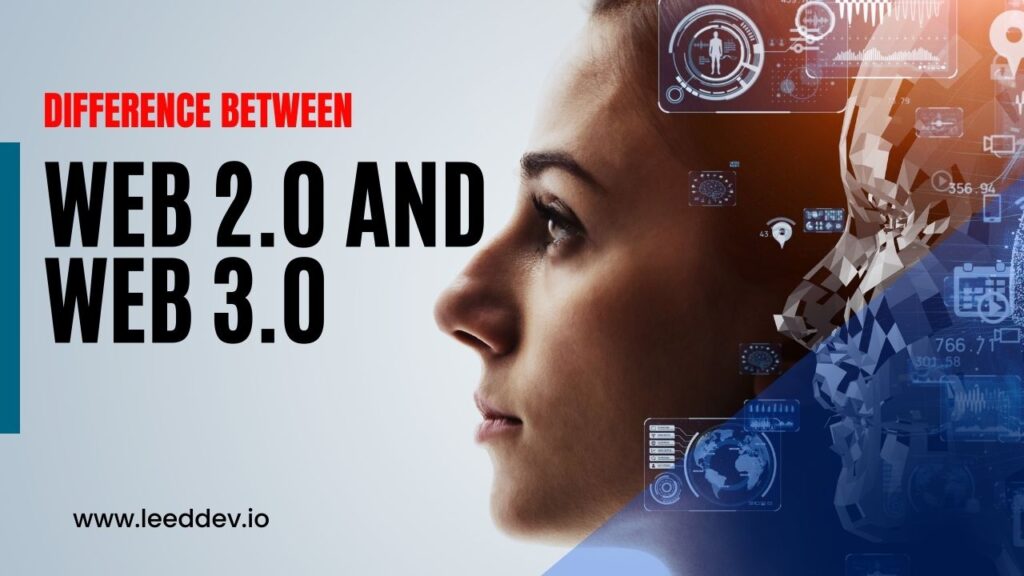What is Web3 technology? Web 3 is a new iteration of the World Wide Web that incorporates the concept of blockchain technology, decentralization as well and token-based economics. The term Web3 was coined in the year 2014 by the co-founder of Ethereum Gavin Wood. Web 1.0 refers to the period from 1989 to 2004 in which most sites consisted of static pages. Whereas in Web 2.0 the idea was based on the read-write concept. The Web 2 idea started in the era of 2004 and continues to the current day.
Co-founder of Ethereum Gavin Wood described Web 3 as a “decentralized online ecosystem based on blockchain”. Web 3 gained popularity at the end of 2021 due to the interest from cryptocurrency enthusiasts. It’s the next stage of the internet in which individuals have more control over the data and the content. For the establishment of ownerships, Non-Fungible Tokens (NFTs) offer unique digital assets.
Read also: How to Choose Mobile App Development Company
What Is Web3?
“Web3 or Web 3.0 defines a new era of the World Wide Web in which users have access to multiple documents, apps, or multimedia that is available on the internet. Prime Web 3.0 examples include decentralization, artificial intelligence, blockchain technology, and connectivity.” Developer Tim Berners-Lee created the World Wide Web, and Gavin Wood coined the term. The Web 3 service is built using decentralized blockchains. An investor named Packy McCormick popularized Web 3 and defined it as:
“The internet owned by the builders and users, orchestrated with tokens.”
With the help of blockchain-based technology, it is possible for users to directly communicate with each other. This is done by becoming an integral part of a Decentralized Autonomous Organization (DAO). It is a group that is run and owned by its community. The user’s data security will be protected with the help of openly available smart contracts.
How Does Web3 Work?

Web 3 works by combining Web 1 decentralization and Web 2 interactiveness in a user-friendly way. It gives you more power over what you do online and makes things safer using blockchain technology. In Web 2 you have to trust big companies regarding your online stuff. Whereas in Web 3 the control is in the hands of all users. Users can even earn special tokens for helping in the development of Web 3. In Web 3 users can sell their data with the help of decentralized data networks which helps maintain ownership controls. The data is processed through various computing resources which include phones, computers, or sensors.
Core Features Of Web 3
To further understand what is web3 let’s discuss some of the core features of Web 3. The era of Web 3 started in 2013. The given features will give you a thorough overview of what is web3.
Artificial Intelligence & Machine Learning
Web 3 uses artificial intelligence and machine learning to grow smarter and more receptive to user demands. Using AI and Ml web, they can understand user preferences based on the history and interaction patterns. Online experiences are more personalized due to artificial intelligence and machine learning.
Decentralization
Web 3 is decentralized; this means that instead of centralized entities having overall control, the ownership gets distributed. Many advantages can be obtained as ownership gets distributed among the builders and users. Security is increased, and there is also greater resilience and improved privacy.
Native Payments
Another advantage of Web 3 is the use of cryptocurrency, which has made a lot of processes easier, instead of traditional cash methods Web 3. Rather than relying on outdated payment processors or bank infrastructure, Web 3 has native payments for spending and sending money in cryptocurrency.
Trustless
Now, hopefully, you might have understood what Web3 is. Another feature of Web 3 is that it’s trustless as it operates using incentives or economic mechanisms. In Web 3, you don’t have to rely on trusted third parties; instead, economic rules ensure that things happen as they should. It’s like a system of checks and balances, which makes the digital world more secure.
3D Graphics
In Web 3 three dimensional graphics are extensively used in websites or services. The applications of three-dimensional graphics can be seen in the fields of gaming, e-commerce, health, and many more areas. It blurs the boundary between the physical and virtual worlds.
Ubiquity
Internet services can be accessed anywhere at any time with multiple devices. You don’t have to exclusively use computers or smartphones. Although Web 2 is ubiquitous in many ways the growth of IoT devices can help reach new levels of connectivity.
Edge Computing
Web 3.0 hinges on the progress of edge computing, where applications and data are handled at the periphery of the network. Different devices like mobile phones, laptops, appliances, sensors, and even smart vehicles are utilized for this purpose.
What is Web 1.0 & Web 2.0?
To understand what is web3, you need to know what web2 and web1 are. In the given details, we will discuss Web 1.0 and Web 2.0
Web 1
Tim Berners Lee’s first inception, now known as Web 1, occurred between 1990 and 2004. Web 1 mainly consisted of static websites that companies owned. There was almost no interaction between the users. Web 1 was an information place for businesses where they broadcast their products. Users could search for the information and read it, leading to the Read Only Web name.
Limitations
The limitations of Web 1 will help us understand the concepts about what is web3. Following are some of the limitations of Web 1:
- Mostly consisted of static, unchanged content, mostly used by businesses to provide information.
- Also, the internet connections were slower, which affected the loading of web pages with large images or videos.
- There was almost close to zero interaction between users and limited opportunities for interaction or content creation.
- Along with this, there were also security issues that led to the safety of personal information.
- Online payment was not as user-friendly as it is today.
Web 2
To understand the concept of what is web3, you also need to understand Web 2. With the emergence of social media platforms, the Web 2 period began. The era started in 2004, and instead of read-only, Web 2 evolved to read-write. User engagement was increased in Web 2 as compared to Web 1. Instead of providing users with information, companies began to provide platforms to share user-generated content. Although users could create the content, they did not own it, nor could they benefit from its monetization.
Limitations
Now let’s discuss the limitations of Web 2:
- Although there was user involvement, this also raised privacy concerns. Sometimes
- A lot of user-generated content, blogs, and social media led to information overload, and it was also challenging to handle vast amounts of data.
- The ease of content creation allowed the rapid spread of fake news and misinformation
- Quality control was also an issue, as there was an abundance of user-generated content, which led to issues of credibility and reliability.
- The content on Web 2.0 platforms was posted without clear ownership rights, which could lead to issues regarding intellectual property.
Diff. Between Web 1.0 & Web 2.0

To further understand what Web3 development is, let’s discuss the difference between Web 1.0 and Web 2.0. The content in Web 1 is static, whereas in Web 2, there is dynamic or interactive content. When we talk about user participation, there was no participation in Web 1, but in the case of Web 2, there was active user participation.
Search engines were also very basic in Web 1 as compared to Web 2, in which there were advanced search engines. Along with this, in Web 2, user-generated content was abundant. However, in Web 1 there was minimal user-generated content. In Web 1, there was limited interactivity as compared to Web 2.
Diff. Between Web 2.0 and Web 3.0

To further explain what is web3, we will discuss the differences between the two, Web 2.0 and Web 3.0. In Web 3, there is decentralized user-driven content, whereas in Web 2, there is dynamic interactive content. Also, there is active user participation in both Web 2 and Web 3. However, in Web 3, ownership is also present.
There is also a difference between search engines; enhanced semantic search engines are present in Web 3. Similarly, although Web 2 and Web 3 both have an abundance of user-generated content, in Web 3, the content is present with ownership. Regarding website updates, in Web 2, there are User-friendly content management systems, whereas, in Web 3, decentralized content updates are present.
Conclusion
Web3 is the future of the internet, offering users unprecedented control and security. Coined by Ethereum’s Gavin Wood in 2014, it includes blockchain technology, decentralization, and token economics. Web3 gained prominence in 2021, captivating crypto enthusiasts.
This new era combines AI and blockchain for personalized experiences, ensuring trust through economic mechanisms. Native cryptocurrencies replace traditional payment systems, improving efficiency. Web3’s decentralization enhances security and privacy, fostering a user-centric internet. It integrates technologies like edge computing and 3D graphics, ensuring ubiquitous connectivity.
In a world reliant on digital interactions, Web3 empowers users, driving innovation and a decentralized internet. It’s the next chapter in the web’s evolution, promising a user-controlled digital future.




